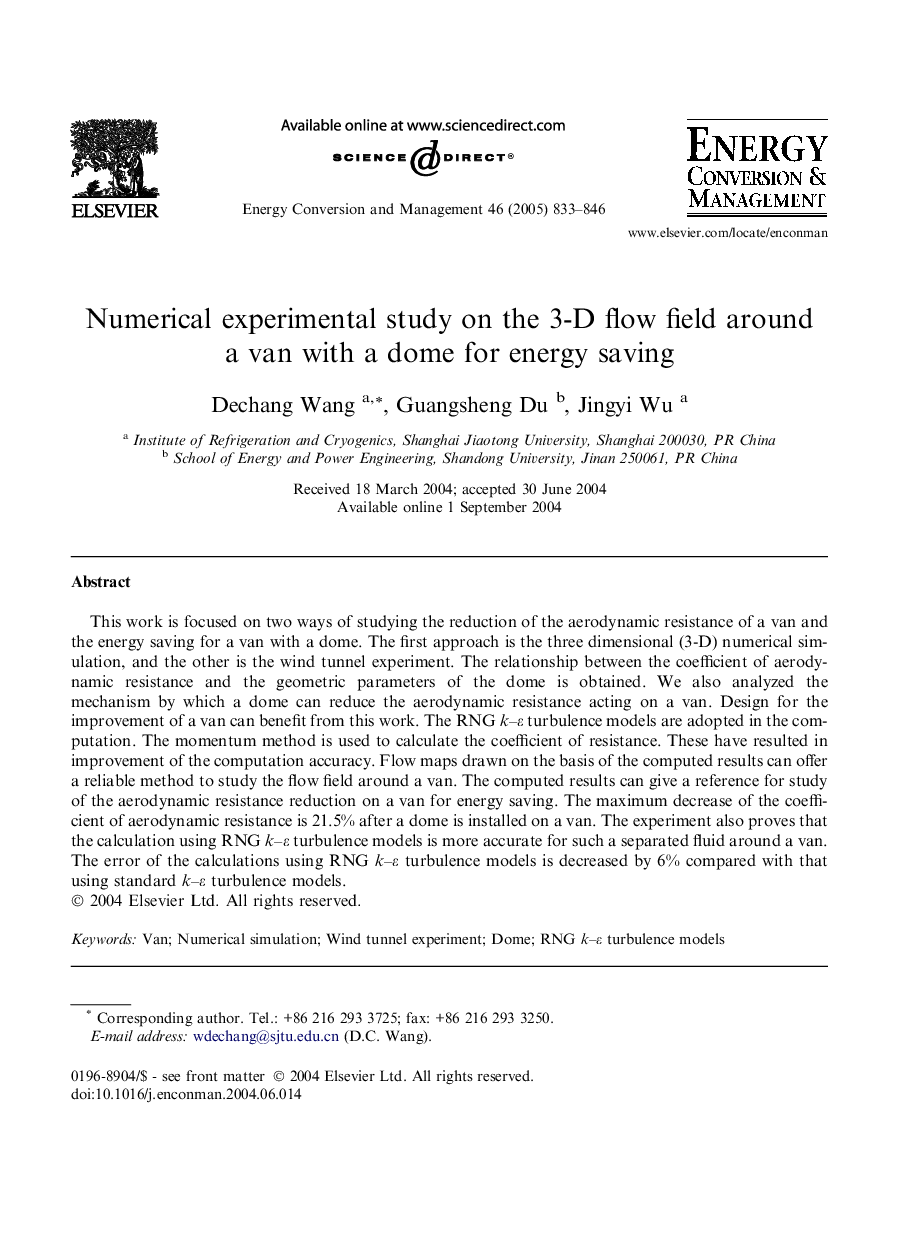| Article ID | Journal | Published Year | Pages | File Type |
|---|---|---|---|---|
| 10415882 | Energy Conversion and Management | 2005 | 14 Pages |
Abstract
This work is focused on two ways of studying the reduction of the aerodynamic resistance of a van and the energy saving for a van with a dome. The first approach is the three dimensional (3-D) numerical simulation, and the other is the wind tunnel experiment. The relationship between the coefficient of aerodynamic resistance and the geometric parameters of the dome is obtained. We also analyzed the mechanism by which a dome can reduce the aerodynamic resistance acting on a van. Design for the improvement of a van can benefit from this work. The RNG k-ε turbulence models are adopted in the computation. The momentum method is used to calculate the coefficient of resistance. These have resulted in improvement of the computation accuracy. Flow maps drawn on the basis of the computed results can offer a reliable method to study the flow field around a van. The computed results can give a reference for study of the aerodynamic resistance reduction on a van for energy saving. The maximum decrease of the coefficient of aerodynamic resistance is 21.5% after a dome is installed on a van. The experiment also proves that the calculation using RNG k-ε turbulence models is more accurate for such a separated fluid around a van. The error of the calculations using RNG k-ε turbulence models is decreased by 6% compared with that using standard k-ε turbulence models.
Related Topics
Physical Sciences and Engineering
Energy
Energy (General)
Authors
Dechang Wang, Guangsheng Du, Jingyi Wu,
